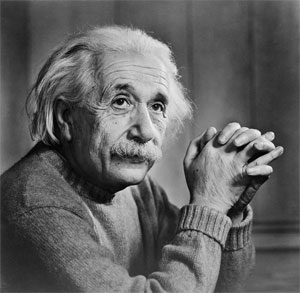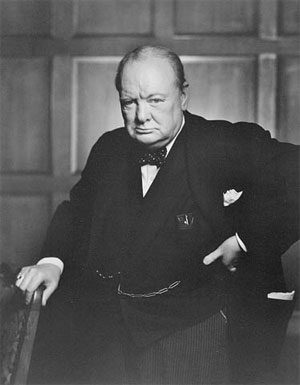Famous Photographers - Yousuf Karsh (Karsh of Ottawa)
 Karsh: A Biography In Images |
Famous Photographers >> Yousuf Karsh
Karsh was born in Mardin, Turkey in 1908. At the age of 14, he fled with his family to the safety of Syria to escape persecution after the Armenian Genocide six years earlier. Two years later, young Yousuf was sent to live with his uncle George Nakash, a photographer in Sherbrooke, Quebec, Canada. Karsh attended school there briefly and assisted in his uncle’s studio. Nakash saw great potential in his nephew and, in 1928, arranged for Karsh to apprentice with portrait photographer John Garo of Boston.
Karsh returned to Canada four years later, eager to make his mark. He established a studio on Sparks Street in Ottawa, close to Canada’s seat of government. Eventually, the Canadian Prime Minister, Mackenzie King, discovered the yet unknown Karsh and took a liking to him. The Prime Minister arranged introductions for Karsh with visiting dignitaries, whom he convinced to sit for portraits. His work was attracting the attention of varied celebrities, but Karsh’s own place in history was sealed in 1941 when Winston Churchill came to Ottawa.
The image of Churchill that he created then brought the photographer to international prominence, and is claimed to be the most reproduced photographic portrait in history. Of the 100 people named by the International Who’s Who [2000] as the most notable people of the century, Karsh had photographed 51. Karsh himself was the only Canadian to make the list.
 Portrait of Albert Einstein photographed by Yousuf Karsh in 1948 |
Karsh was a master in the use of studio lights. One of Karsh's distinctive practices was lighting the subject's hands separately. He photographed many of the great and celebrated personalities of his generation. Journalist George Perry wrote in London's Sunday Times that "when the famous start thinking of immortality, they call for Karsh of Ottawa."
Karsh had a gift for capturing the essence of his subject in the instant of his portrait. As Karsh wrote of his own work in Karsh Portfolio in 1967, "Within every man and woman a secret is hidden, and as a photographer it is my task to reveal it if I can. The revelation, if it comes at all, will come in a small fraction of a second with an unconscious gesture, a gleam of the eye, a brief lifting of the mask that all humans wear to conceal their innermost selves from the world. In that fleeting interval of opportunity the photographer must act or lose his prize."
Karsh said "My chief joy is to photograph the great in heart, in mind, and in spirit, whether they be famous or humble." His work is in the permanent collections of the National Gallery of Canada, New York's Museum of Modern Art and Metropolitan Museum of Art, George Eastman House International Museum of Photography and Film, Bibliothèque nationale de France, the National Portrait Gallery in London, the National Portrait Gallery of Australia and many others. Library and Archives Canada holds his complete collection, including negatives, prints and documents. His photographic equipment was donated to Ottawa's Museum of Science and Technology.
Karsh published 15 books of his photographs, which include brief descriptions of the sessions, during which he would ask questions and talk with his subjects to relax them as he composed the portrait. Some famous subjects photographed by Karsh were Albert Einstein, Albert Schweitzer, Alexander Calder, Andy Warhol, Audrey Hepburn, Clark Gable, Dwight Eisenhower, Ernest Hemingway, Fidel Castro, Jacqueline Kennedy, Frank Lloyd Wright, General Pershing, George Bernard Shaw, Georgia O'Keeffe, Grey Owl, Helen Keller, Humphrey Bogart, Indira Gandhi, John F. Kennedy, Laurence Olivier, Madame Chiang Kai-Shek, Muhammad Ali, Pablo Casals, Pandit Nehru, Paul Robeson, Peter Lorre, Picasso, Pierre Elliott Trudeau, Princess Elizabeth, Princess Grace, Prince Rainier of Monaco, Robert Frost, Ruth Draper, Field Marshal Lord Alanbrooke and, arguably his most famous portrait subject, Winston Churchill.
 Winston Churchill by Yousuf Karsh
Winston Churchill by Yousuf Karsh |
Churchill marched into the room scowling, "regarding my camera as he might regard the German enemy." His expression suited Karsh perfectly, but the cigar stuck between his teeth seemed incompatible with such a solemn and formal occasion. "Instinctively, I removed the cigar. At this the Churchillian scowl deepened, the head was thrust forward belligerently, and the hand placed on the hip in an attitude of anger."
The image captured Churchill and the England of the time perfectly — defiant and unconquerable. Churchill later said to him, "You can even make a roaring lion stand still to be photographed." As such, Karsh titled the photograph, The Roaring Lion.
However, Karsh's favourite photograph was the one taken immediately after this one where Churchill's mood had lightened considerably and is shown much in the same pose, but smiling.
Further Information
Recommended Reading
 Karsh: A Biography In Images
Foreword by Malcolm Rogers During his remarkable life, Yousuf Karsh traveled the globe to photograph subjects ranging from historical figures to anonymous farmers to steelworks. Karsh: A Biography In Images is a full revision of the 1996 60-year retrospective of his work and brings that popular catalogue back into print in an affordable paperback format. This new edition covers the photographer's career with greater breadth than its previous incarnation, adding works from his early experiments and his photojournalism commissions in Canada. Karsh's reputation as one of the most sought-after portrait photographers of the 20th century is well established. A roll call of his subjects is a veritable who's who of the modern age--Winston Churchill, Jacqueline Kennedy, Pablo Picasso, Walt Disney, Elizabeth Taylor and Albert Einstein, to name just a few--and this book features many of these figures, in some of the most recognized images of our time. But added to the portraits are a number of lesser-known or previously unpublished photographs--early figure studies, atmospheric views of the Ottawa theatre and scenes of wheat fields, city streets and factories across Canada. With its long autobiographical essay and extensive captions for each photo, many of them new to this edition, Karsh: A Biography In Images is both an elegant celebration and an indispensable overview of a life lived in photography.
Karsh: A Biography In Images
Foreword by Malcolm Rogers During his remarkable life, Yousuf Karsh traveled the globe to photograph subjects ranging from historical figures to anonymous farmers to steelworks. Karsh: A Biography In Images is a full revision of the 1996 60-year retrospective of his work and brings that popular catalogue back into print in an affordable paperback format. This new edition covers the photographer's career with greater breadth than its previous incarnation, adding works from his early experiments and his photojournalism commissions in Canada. Karsh's reputation as one of the most sought-after portrait photographers of the 20th century is well established. A roll call of his subjects is a veritable who's who of the modern age--Winston Churchill, Jacqueline Kennedy, Pablo Picasso, Walt Disney, Elizabeth Taylor and Albert Einstein, to name just a few--and this book features many of these figures, in some of the most recognized images of our time. But added to the portraits are a number of lesser-known or previously unpublished photographs--early figure studies, atmospheric views of the Ottawa theatre and scenes of wheat fields, city streets and factories across Canada. With its long autobiographical essay and extensive captions for each photo, many of them new to this edition, Karsh: A Biography In Images is both an elegant celebration and an indispensable overview of a life lived in photography.
On the Web
Yousuf Karsh Artist Gallery at CyberMuse the National Gallery of Canada's permanent collection.
This article is licensed under the GNU
Free Documentation License.
It uses material from the Wikipedia article "Yousuf Karsh".
The images by Yousuf Karsh used in this article, retrieved
from Wikipedia, have been released into the public domain by the copyright holder,
their copyright has expired, or they are ineligible for copyright. This applies worldwide.
